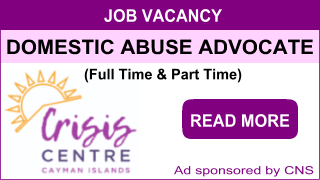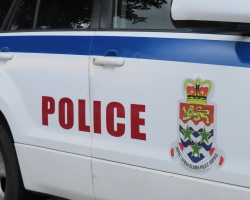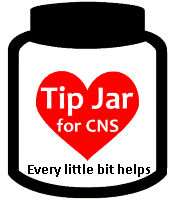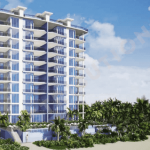Hospital to step up urgent care service
(CNS): The government hospital has begun the process of recruiting two new doctors for the general practice clinic to improve the urgent care service and reduce the number of patients using accident and emergency when they are unwell. The health minister told the Legislative Assembly that the hospital has to prioritize acute patients in the ER, which can leave those requiring urgent but not emergency treatment waiting for several hours.
Problems in the ER had been outlined by Ezzard Miller, the independent member for North Side, who related an experience of his own when a family member needed urgent care. He said the waiting time for all of the non-emergency patients on the night of 16 April was over four hours.
Miller pointed out that the hospital had tabled its 2012 accounts just days before, revealing that the HSA spends over $90 million a year to operate a 120-bed hospital, with more than half of that for staff, so there were “no excuses for poor service concerning lack of resources”.
Responding to the statement, Premier Alden McLaughlin, who is now the health minister, outlined problems, with doctors out sick and a critical emergency that night, but he said the Health Service Authority was trying to address the broader problems of patients using the ER for non-acute problems.
“A big part of the issue in Cayman and the system we have is that the emergency room isn’t used only for cases of genuine emergency. It also functions as an urgent care facility,” the premier explained. “What happens is the cases which are truly emergency in nature always get priority — and properly should — over the urgent care cases. Persons who come in, in some distress, but having been triaged are not assessed as being in a life threatening situation get put back while they seek to address what they have determined as the truly emergency cases.”
He assured his legislative colleagues that the hospital was stepping up the ability to deal with urgent care to free up the ER for truly emergency cases.
Apologizing on behalf of the HSA to Miller, who said he had left the hospital before the patient was treated because of the significant wait, the health minister added, “We are very concious of the situation and are working to try to address it.”
According to HSA CEO Lizette Yearwood, on the night in question there were 27 patients who registered with the reception for treatment but the non-acute patients were left waiting for some four hours. Although such a wait would normally trigger an overtime doctor, even for urgent care, two doctors were out sick and another had already worked excessive overtime, so additional doctors were not called for the non-emergencies.
In an explanation to the Legislative Assembly regarding Millers wait, Yearwood said that the hospital was dealing with a large number of urgent care cases in the ER and the hospital did need to find more resources and space to expand the service to patients who may be very unwell but not in a dangerous or life threatening situation.
As a result, she explained, the hospital was hiring two new general practice doctors to address the problem of urgent care patients being pushed back because of acute patients being prioritized.
Although the recruitment process has begun with print advertisements, CNS is awaiting the details of the two new jobs at the general practice clinic as the medical openings have not been posted anywhere online.
Motion regarding HSA emergency room waiting times – EZZARD MILLER – 17 April 2015
Category: Health, Medical Health





































After reading the article on health care system in the Cayman Islands, it sounds like the government is taking health care , and people health as a last priority , and that they should be the ones that need more education in health care.
In reading the response from the HSA and the post from Mr. miller. I am glad he brings the issues to the table. However, There is a much larger issue and it is the public at large and the HSA that needs to take some responsibility for our current system and how it functions. An emergency room is just that. It should be utilized for acute injury or illness that requires immediate attention that cannot wait.
Unfortunately, the GT hospital emergency room is used as that, as well as a primary care clinic. Individuals are seeking care in the A&E for what should be primary care visits. This creates a bottle neck within the system, creates longer wait times and is costly to both the HSA and the consumer. In some cases, Individuals who are chronic abusers of the system know if they come in with a complaint of a serious nature or call 911 they will get seen quicker. This behavior takes up critical bed space and ancillary resources (lab, radiology, ems, ect.) this is a common occurence in any A&E adding insult to injury on an already overloaded system.
One must also consider the serious and potentially fatal health risk for individuals who use the A&E as a source for primary care. The key to remaining healthy is to “manage your health” this cannot be done in an A&E! Individuals presume if they see an A&E doctor, that they are looking at their overall health. That is NOT their role in the healthcare pyramid. It is in fact to treat the acute illness or injury than pass it to either the patients primary care physician for follow-up or to a specialist for more critical specialized care and once stable onto the the primary care provider for long term management.
The HSA needs to create a campaign that promotes the use of the General Practice Clinics, possibly expanding the hours to accommodate working individuals, they need to educate the benefits of seeking a primary care physician as well as the serious risk of not having one. It is nice that they have the acute clinic at the GT A&E however, the uneducated consumer may not understand the difference. In their mind they are sick and they came to the emergency room to get better.
The government should invest in a “minute clinic” centrally located in a 24 hour pharmacy and educate the consumer that this is were you go for minor illnesses or injury after hours or if you cannot be accommodated by the primary care physician during working hours. It further needs to educate the consumer of why it is important to use the system properly to avoid overcrowding in the A&E. The HSA can utilize their website/social media to provide the average wait time in the A&E for non critical patients and at the same time promote what other clinics can be utilized for a quicker response.
The consumer must own their part on our over burdened system. In a country with high numbers of individuals with obesity, diabetes, heart disease, cancers, stroke, renal impairment and mental health issues we cannot afford to be passive in regards to how we manage our health. We as consumers should demand education on when and why to seek the emergency room, when to call 911, when it is appropriate to go to a clinic for a minor illness, what defines the differences between the need for A&E or a clinic and that seeing a primary care physician regularly may not only save you money in the long run, it may save your life.
Our issues of healthcare cannot be cured overnight. Ongoing education must reach every consumer at every access point of our healthcare system. In every system there are critical education access points. We do not utilize this process in our system. The process is not a costly one, however it is labor intensive and time consuming to implement. But once in place becomes practice. It starts with standardized procedures, access identification points, individual & family education and promotes continued follow up. It places ownership of health onto the patient and caregivers, it reduces patient fears, provides flawless continuity of care, reduces cost, reduces polypharmacy and creates empowerment within the consumer and partnerships with medical care providers.
Healthcare is a business. It is the healthcare providers job to provide safe, effective, efficient services, care and education to the consumer and it is the consumers responsibility to manage their health to the best of their ability. That means seeing a regular doctor annually, following up on recommendations for improved health, completing and following up on recommended testing or specialist visits, knowing our medical history and what medications we take, what there for and what our game plan is to maintain our health.
The best for profit hospitals pride themselves in not only patient satisfaction, but provider satisfaction. They require staff to round on patients asking if they have any needs or suggestions and give there staff the power to provide it within reason and actions to take if the request cannot be solved. They require senior staff to round on employees daily asking them if they have the tools and resources to do their jobs and are expected to address the issues with action. They utilize patient education as a way to manage cost and provide resources, education and continuity of care post discharge to manage re-admission. They provide respite services to families who have no help and may otherwise “dump” family members at a local hospital to get a much needed and deserved break. It is amazing that a simple gesture of a blanket or a pillow to a patient can make the difference between a good experience and a bad one. But turn the table and think of the frustrations of the provider who does not have access to a pillow or a blanket to make their patient more comfortable. It’s a two way street!
Cayman is a very reactive society. Healthcare is designed to be proactive. Both the system and the consumer must take responsibilty and own their own part in its ineffectiveness. Until the HSA provides the ONGOING education, resources and structure we will continue down the same path. In regards to the consumer, we must educate ourselves and take responsibility for our health and how we seek organized healthcare. It is then and only then we will see true changes is cost, satisfaction and a healthier Cayman.
The situation in the A&E department will NEVER change, no matter how many infomercials or radio spots you produce or how much you try to educate. People don’t care, they want what they want and they want it now, the real sufferers be damned. I wish you luck and hope that you can find a solution but I seriously doubt it will ever happen.
Yes, Welcome to Cayman Emergency Room and my experiences have been so bad that when I was seriously injured in an accident and in the ambulance I refused to go to the hospital. It was not until later on that my partner took me there and I felt safe enough with him to protect me.
A&E is a dangerous place for a lone disabled woman to go to in Cayman.
Apart from the drunks, drug addicts, violent and other scarey people there are the staff who treat disables very badly indeed. Obviously one does not have to tell them the medical history (I never say I have ME) but any sign of disability or “weakness” is seen by them as an excuse to give a neglectful and third rate service. The staff hide behind screens but leave vulnerable adults at the full mercy of whoever wants to walk into A&E.
The staff don’t have a clue on how to treat a disabled person who is unable to speak properly and defend themselves. Well, they do have a clue. Get rid of them and make conditions impossible so they leave.
A&E in the Cayman means queues and long waits in very uncomfortable conditions. If one is in a wheelchair or needs to lie down/sit with legs in a certain way then it is very hard indeed with little compassion or help. Complaints do nothing (I’ve tried).
It’s a lack of education with the general public. People choose not to go to the district clinics or the present GP and wind up in A&E. Most of the time it looks like a family and friends gathering place down there. The only thing missing is a BBQ . The emergency room is for Emergencies.
First things first.
1. Remove the chain that blocks access to the ER via car from the main parking lot. Not being able to pull up to the ER in case of emergency is crazy.
2. Please get automatic doors going into the ER. Try getting in there when pushing someone with a wheelchair is impossible.
This is common sense, and you shouldn’t need a high priced consultancy report to state the obvious. (Not that they would read it anyway.)
This sounds like the hospital service has gotten much worse than what it was 50 years ago .
My recent experience at the ER needs to be told so that other lives can be saved. I went twice in three days for chest pains, ECGs were done and each time they said it was normal until on the second night I suffered a heart attack right there and then they did some testing and sent me up to health city. The reception I received form the ER doctor and nurses was the most horrible experience. Those workers have absolutely no compassion. I was in so much pain I got out of the bed and begged for something to ease the pains I was told but the Dr. He is attending to another patient and will be with me when he was finished. Long night of suffering but I am alive and was able to compare services having been eventually rushed to heal city where humans deal with humans . The staff at the health city are the most compassionate doctors and nurses there are.
Too bad he left before his family member received treatment. He should have had the joy of experiencing the bad attitude and bad bedside manners displayed by many employees in the ER and witnessed the run-down and dirty facilities first hand. If you ask for a blanket, they hand you something that looks like it got caught in the car door and dragged down the road for a few miles…….
Wow is this suppose to be something new well its not there are piss poor doctors and nurses there but there are also very nice knowledgable caring doctors and nurses whom are over worked in all sections not just A&E alden you applied for the top job but ur not equipted to do it becuz you’re a prime example of piss poor civil servants while i will again say there are those that try their utmost to provide the public with friendly imformative (correct) information in a timely manner because of supervisory contraints there is only so much they can do too.
Just my 2 cents